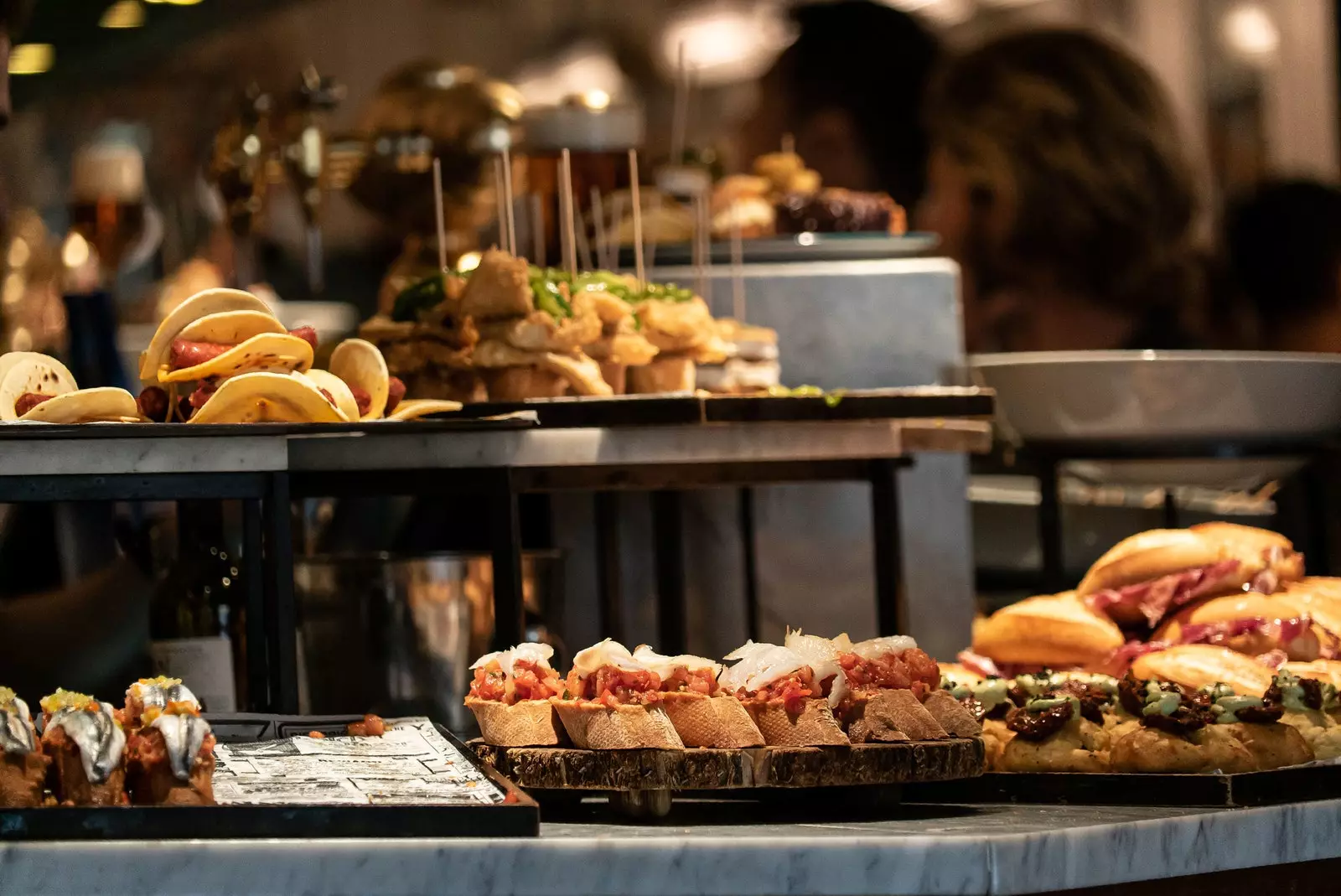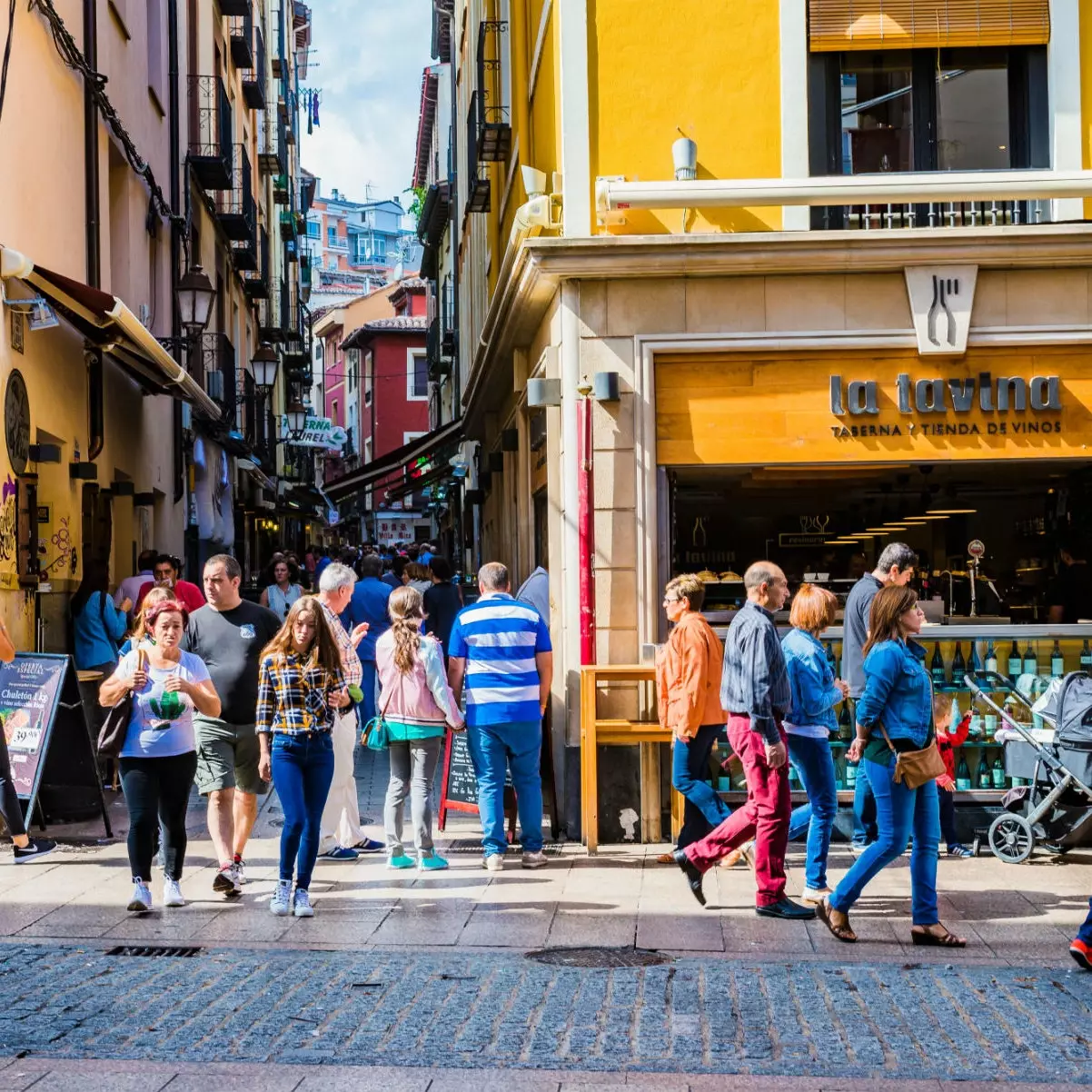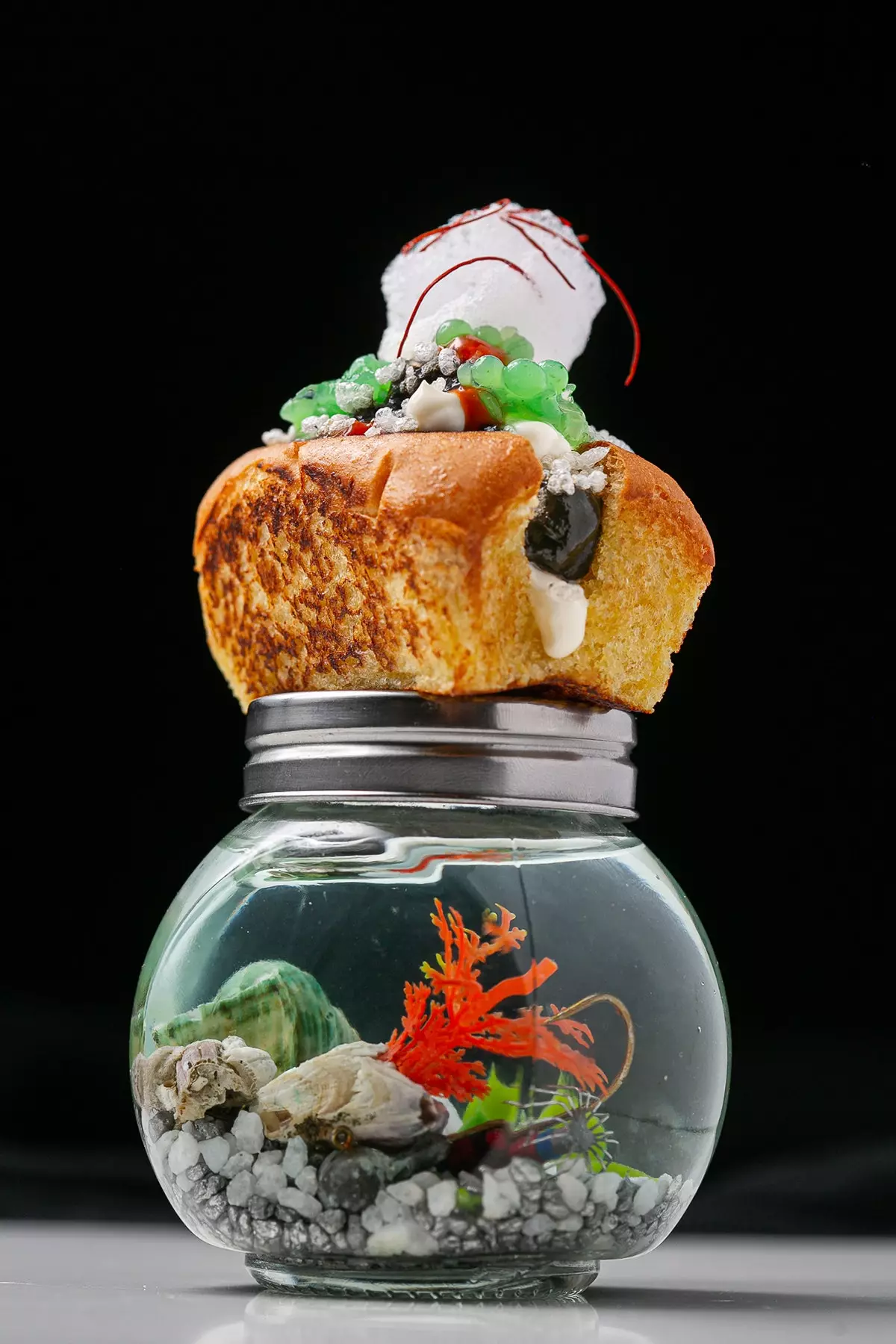
Everything that the damn virus is taking away from us is summed up in a pintxos bar
Theoretically enter Phase 2 of de-escalation should be a small big victory. The luxury of staying with a group of friends on the terrace of the usual bar , sharing pintxos and drinks, is proof that the worst is over. But the harsh reality is that the reopening of bars and restaurants , after two and a half months of forced hiatus, is leaving a bleak picture, since much more notorious (and painful) is the count of businesses that will not reopen . "Unfortunately we can say that it is the first time that Laurel Street, as we knew it, can disappear," says the official statement from The Association of Hoteliers of La Laurel this past weekend . “Several colleagues have decided to definitely lower the blind, and the rest of us are working very hard to achieve a fair and safe solution for everyone. Together, and only together, will we get out of this."
The particularity of one of the streets of pinchos and rations, which summarizes the quintessence of the people of Logroño since the 16th century , brings into play a determining factor that no one dares to verbalize out loud: social distancing is mission impossible in many establishments and restrictive measures seem like an insurmountable abyss . The questions of Laurel Street are still the mirror where the streets of the historic center of many cities in our territory can be reflected. Alleys with bars where the word noise was invented , corridors less than a meter wide where wines go in and out side by side , catchy floors with a lot of history, tiny compressed air dining rooms and hugs with the smell of anchovy and green pepper sandwiches.
In other words, If the future of Laurel Street depended on an epidemiologist, it would be best to start packing . In other words, the fight to eradicate the viral pandemic is still a fight against the very nature of a Latin society that does not avoid human contact. Perhaps for this reason and many more, some bars and restaurants have preferred to close with a black hole in their accounts before reopening with the risk of bankruptcy in the medium term.
Something that is also perceived in the bastions of pintxo par excellence . The restrictive measures in cities such as Bilbao or San Sebastián they feed on the idiosyncrasies of their own culinary culture. Terraces with occupancy limitation of 30% , restrictive services in the dining room without the possibility of approaching the bar and the last straw for the lover of traditions: showcases without free access to freely reach as many pintxos as the stomach allows.

Laurel Street, Logroño
Beyond what started out as custom of the kid , which could be summed up as the perfect snack to prepare the stomach before a good drink of wine, the pintxo has been able to adapt to the passage of time. Almost a century ago basque poteos and the moment of lucidity of some txikitero when painting an olive, an anchovy and a chilli pepper. Neither the Civil War nor the fads nor the Americanization of snacking not even mass tourism have altered the seven lives of the pintxo . An essence that does question a viral pandemic with only a few months of existence.
With the approval of City Hall of San Sebastian , Hospitality Gipuzkoa approved the following characteristics to cover the pintxos of up to 3,500 premises: “ Minimum height of 20 centimeters . They can be higher in case someone wants to have dishes at two heights. They can be refrigerated or non-refrigerated. There is no obligation in this regard. They must be closed at the top, the sides and the front. The back free. And they have to be translucent.” Whoever does not comply with what is stipulated risks economic sanctions for hygiene reasons and even the closure of the establishment in case of recidivism.
After the initial shock, several Basque chefs began to realize that there is something as or more important than health here. Jon “Zabaleta” from the Zabaleta bar in San Sebastián , he preferred to take a step forward with a blaming text in Ondojan, titled “Let's defend the pintxo bars”. “I think it is very serious that they want to cover them up forever, and I think that if they do we are going to load something sacred like the pintxo bars from San Sebastian . I have spoken with many hoteliers and the first impression is that they are all in shock and that now they have enough to get ahead. If it is necessary to put showcases, then they are put, but as something conjunctural . Even so, it seems to me that many do not see the real problem in the long term when the real normality returns and this norm sticks. (...) They are going to take away the true essence and differentiation and that is serious , the hotel industry is going to be vulgarized with the horrific showcases and the category of our establishments is going to be lowered on account of policies to survive. We just needed this...”, she says.
So that, Do the covered pintxo bars represent everything that the virus is taking from us? If the showcases take hold and stay forever, Will we lose a bit of our gastronomic heritage or is this an unfounded exaggeration?
In an interview on 7 Cannibals, Juan Luis Aduriz He defends that the prohibition of personally choosing the pintxos with our hands is good. “A virus has achieved what not even kale borroka has achieved. It's brutal. Within Donosti, the battle in the way of serving pintxos has been incredible. Not politics. People killed for it. Well, look, the regulations came out in the middle of the crisis and nobody has said anything. A virus has liquidated all the combative energy of the hospitality sector ”, assures the one from Mugaritz making the bench jump.
It is important to emphasize that in the Basque Country, gastronomic culture is the main factor for attracting visitors . “In other times, tourism hardly had any weight in an industrialized Euskadi. Today it represents 6% of GDP ”, says Mikel Segovia, a journalist for El Independiente in Euskadi and a chronicler of the closure of bars and restaurants in the middle of the street. “It is true that the pandemic may force us to adapt the way of displaying pintxos, planning the bars and establishing the relationship between the premises and the clients. One of the essences of the pintxo culture is that the customer is 'self-sufficient' . Thus, until a few years ago, waiters charged according to the number of toothpicks on the plate. Now the variety, complexity and creativity of pintxos has evolved so much that there are not always toothpicks to count. Confidence in the customer continues to weigh heavily when asked how many he has consumed. In recent years, with the increase in tourism in the Basque Country, consumption has been extended upon request to the waiter , but fundamentally the product and the culture of drinking wine around a pintxo remains unchanged”.
The truth is the excellence of miniature cuisine in the form of a pintxo is guaranteed with or without showcases through . No glass or methacrylate wall will be able to deal with the future of something so deeply rooted between zurito and glasses of cider . However, the growing feeling of "you look but don't touch" or that the experience is less gratifying for the five senses... that is more debatable. "The discomfort of some hoteliers is understandable, but I would not say that it is generalized," continues the journalist. “ In most cases, hoteliers are acting responsibly . Now the important thing is to resume economic activity and for the premises to start operating. In the Basque case, hospitality is very important . That is why The Basque Government has managed to authorize the opening of 50% of the interior space of the premises, compared to 40% in the rest of Spain . The risk of regrowth in autumn is a reality and I imagine that until there is a vaccine we will not begin to see how the pintxo and stew culture recovers in the Basque Country with full normality”.
This is how he perceives it Amaia García de Albizu from A Fuego Negro . In his restaurant in the old town of San Sebastián, they have everything almost ready to return to the ring. “The pintxo culture is strong enough to stay . Another thing is that it has to transform and adapt to social changes, just as as people we must evolve and adapt to the changing circumstances of our environment . It is the law of a happy survival”, he says emanating positivism. They only need to cover up a couple of little things, but he believes that “ the pintxos bar showcase is here to stay . Right now everything is a fairly uncertain path, so decisions will have to be made with each change. Of course, if the regulation does not allow eating at the bar, we will go to the "pintxos at the table" mode, which already exists now, but it would not be the same without a busy bar with its pleasant comings and goings. It would lose the grace a little, yes, so that we are going to deceive ourselves ”.
In the same tune they answer from Danako Jatetxea from Irun . “Security measures in hospitality establishments are complicated. Bar counters are a must for tourists coming to the Basque Country. When they arrive in a rush, normality will be recovered, even if it is with showcases. When they took away tobacco from the bars, it seemed like the end, and I think that today most of us are delighted. The same thing will happen with the pintxos. In addition, with the avant-garde pintxos movement on the rise, I believe that pintxos will be in good health, since many are ordered and made at the moment”, they assure David Rodriguez and Naiara Abando.
In this place from Irundarra they have taken the pincho to excellence thanks to several prizes in the Pintxos Championship of the region. In the 2019 edition they won first place and popular favor thanks to a brioche bread stuffed with two traditional stews, one of cod kokotxas with pil-pil, and another of begihaundi baby squid in its ink, accompanied by a caviar of lime, lemon mayonnaise, sriracha and an air of chilli. More than a pintxo, it is the pintxo among pintxos; a work of art with its own name, “Beltza”.
From now on, whoever wants to devour it with their eyes before tasting it with their mouth, must do so through a glass separating the impulse and the desired food. “We have already placed some showcases for the pintxos. It is a topic that had been around for years and due to this pandemic it has come to stay. No way is this going to make pintxos disappear from a bar”.

Beltza, pintxo winner of the 2019 Pintxos Championship
